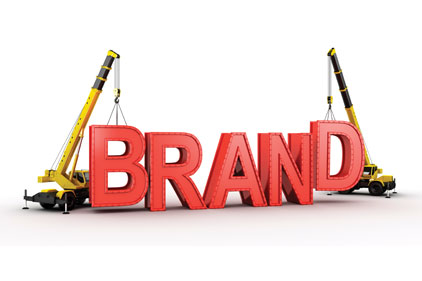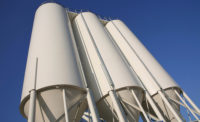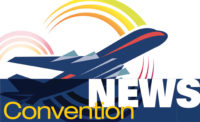I define “The Four Pillars of Safety” as engagement, recognition, communications and measurement. This article will focus on employee communications, which is essential for allowing accurate and timely messaging to flow freely throughout and organization.
Editor’s Note: To read this author’s articles about the first two pillars of safety, see ISHN’s June (“The ‘heavy lifting’ of safety,” pp.74-75) and September (“No pandering, please,” pp.52-53) issues.
In the first two articles, we looked at the pillars of employee engagement and recognition and examined why they are fundamental to creating a great safety culture. Let’s say you have solved for those two variables and are using good engagement tactics and recognizing the behaviors that will generate a safer workforce. Now what? It’s time to beef up your marketing and communications strategies.
Your safety brand
In order to communicate effectively you must first have a “brand” that people can sink their teeth into. There’s a reason why the vast majority of all products sold have a brand name on them. People are preconditioned to respond to brands and to ascribe greater value to brands they believe in and trust. If you are a safety manager, the brand you should care about the most is your company’s safety brand. If one does not already exist, it is your job to create it, and once it exists, it is your job to make it ubiquitous throughout your organization.
A safety brand should reflect the organization’s true beliefs about keeping its workers (customers and partners) safe on the job. Many companies define their core beliefs in their mission statements and, especially for companies in safety challenged industries, many of these companies already have a mantra for safety. When one exists, a safety manager should enhance and expand that message for use in its safety recognition program. When one does not exist, the message will need to be created.
If you read virtually any article about a company with a good safety culture, you will undoubtedly find that they have a name, a “brand for safety” that they use to encapsulate their ideology and promote it to their workers. Articles I’ve read recently about companies with strong safety records and their safety brands include:
Bell Helicopter – “Mission Zero”
Republic Services – “Dedicated to Safety” (DTS)
Skanska – “Safety Super League”
ABB – “Safety Observation Tours” – SOT
BASF – “Process Safety Emphasis Program”
Make a splash
Once you have your safety program branded you need to make sure that people are made aware of that brand. If it is a newly created brand or one that is in dire need of reinvigoration, it will be best to make a big splash when introducing it. Don’t “slip a mention of it” in paragraph 11 of your safety newsletter. Find a way to draw attention to it in much the same way a consumer company would to launch a new product; think Apple and the iPad.
Promote the brand name in your company’s newsletters, on its customer facing website and intranet site. Put it on posters, flyers, paycheck stuffers, personal protective equipment and coffee mugs. And the effort to put your safety brand out there needs to be ongoing, not a onetime event. A tattered poster hanging on the wall that has not been updated in 5 years sends the wrong message. Challenges of promoting a safe work environment are dynamic and so too must be your strategies for dealing with those changes.
Recognition/rewards program
One of the best ways to launch and promote your safety brand is in conjunction with a safety recognition/rewards program. Such programs, when created properly, capture the attention of the safety sensitive audience they are designed to address. Recognition programs are the best way to launch your safety brand in a way that cannot be ignored. It is also the best tool to continually communicate and promote new and ongoing initiatives that change behaviors and reinforce safe work practices.
Consider the Dedicated to Safety (DTS) Program for Allied Waste (now Republic Services). Now in its 9th year, the DTS Program has been the primary communications tool and a significant contributor to the companies’ outstanding safety record. The DTS award site received so many visits from workers that Republic redirected the path to the site through its intranet site. The increased volume of visitors to their intranet site, where other vital information resides, was an ancillary benefit of the safety recognition rewards program.
Properly designed award websites for recognition programs should provide a place for workers to bank and redeem points earned for safe work practices. In addition, these sites should display news stories, graphics, videos and more that reinforce the message of proactive safe work. They should also utilize surveys and quizzes to make communications bi-directional and to reinforce training. These sites should be “sticky” so workers are compelled to visit longer to better absorb safety messaging.
Promoting your message
In addition to the award website (program hub), the following communication elements are essential for promoting the safety message:
Award Catalogs: These typically display a small subset of the awards available in the program. They can be useful in allowing participants who do not have web access to place orders; however their primary benefit is they tend to be kept in the home where they serve as a reminder of the value the company places on safe work habits.
Emails & Texts: Most good award sites will have a built-in email function that will automatically send messaging to participants when they place an order or an order is shipped. In addition they often have the ability to push emails to participants when points are added to their accounts, or they can afford a wish list item, or a new quiz is available, etc.
Point Vouchers: The best way to reward someone for performance in a safety recognition program is with face-to-face interactions and a tangible point voucher. Printed vouchers should carry the branding and messaging of the program. Handing someone the points they have earned (often in front of their peers) is the best way to reinforce the recognition portion of the program.
Printed Materials: Other printed pieces like posters, flyers, letters, surveys and the like are the best ways to extend the messaging and remind participants of the benefits of safe work.
Videos & Multi-Media: The majority of clicks on search engines these days are on videos. Videos are great ways to insure that the features and benefits of your program are properly understood and internalized by your workers.
Social Media: Social media sites give program participants a place to share their thoughts and experiences about the company’s safety culture.
Promotional Products: Giving a custom branded item of value for going “above and beyond” (i.e. a jacket for a long-time safe worker) will catch the attention of everyone involved.
One of the biggest mistakes companies make is poor branding and communication of their safety message. To be sure, a company first needs something worthy to communicate to make these efforts worthwhile. Once you’ve built a great safety recognition/rewards program, a consistent effort to communicate it to the workforce is as essential as the program itself.



